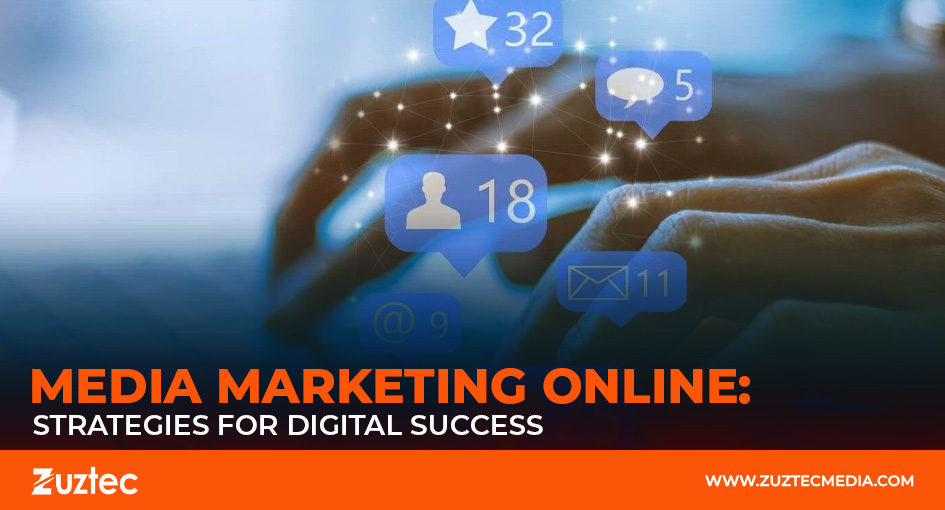
Media Marketing Online: Strategies for Digital Success
The digital landscape has transformed how businesses connect with their audiences, making media marketing online an essential part of any brand’s growth strategy. With billions of people actively engaging on digital platforms daily, businesses now have unlimited opportunities to build their brand presence, drive engagement, and increase conversions.
Unlike traditional marketing, online marketing enables brands to interact with their audience in real-time, create personalized campaigns, and measure performance with accuracy. From social media and content marketing to paid advertising and influencer collaborations, businesses can leverage multiple strategies to reach their target market effectively.
However, success in online marketing requires more than just having an online presence. Brands must develop a structured approach, focusing on content quality, audience engagement, and data-driven decision-making.
The Core Components of Media Marketing Online
Social Media Marketing
Social media platforms serve as the backbone of online media marketing, offering brands direct access to their audience.
- Platform Selection – Choosing the right platforms based on the target audience (e.g., Instagram for younger demographics, LinkedIn for B2B marketing).
- Content Strategy – Posting engaging, value-driven content such as videos, infographics, and user-generated content.
- Community Engagement – Actively responding to comments, messages, and mentions to foster brand loyalty.
A well-planned social media strategy helps businesses stay relevant, build relationships, and drive customer interactions.
Content Marketing for Brand Authority
Creating high-quality content is key to positioning a brand as an industry leader.
- Blogging – Writing informative and SEO-optimized blog posts that provide value to readers.
- Video Marketing – Engaging audiences through short-form (Reels, TikTok) and long-form (YouTube) videos.
- Podcasts and Webinars – Offering in-depth insights and discussions to build credibility.
Content marketing supports all other aspects of media marketing, helping brands educate, entertain, and convert their audience.
Paid Advertising for Instant Visibility
While organic marketing builds credibility over time, paid campaigns provide immediate results.
- Social Media Ads – Running targeted ads on Facebook, Instagram, and LinkedIn to reach specific demographics.
- Google Ads – Utilizing search engine marketing (SEM) to appear in front of high-intent users.
- Retargeting Campaigns – Re-engaging users who have previously interacted with the brand but didn’t convert.
A combination of organic and paid strategies ensures a balanced approach to online media marketing.
Influencer and Affiliate Marketing
Collaborating with influencers and affiliates helps brands expand their reach and credibility.
- Micro-Influencers – Partnering with influencers who have smaller but highly engaged audiences.
- Brand Ambassadors – Building long-term relationships with influencers to maintain authenticity.
- Affiliate Programs – Encouraging third-party partners to promote products for a commission-based reward.
Influencer and affiliate partnerships can significantly enhance brand awareness and conversions.
Email Marketing and CRM Integration
Despite the rise of social media, email marketing remains a powerful tool in media marketing online.
- Personalized Campaigns – Segmenting audiences based on behavior and preferences.
- Automated Sequences – Setting up automated emails for lead nurturing and customer retention.
- CRM Integration – Using customer relationship management tools to streamline communication and track engagement.
Email marketing ensures consistent communication and long-term customer relationships.
Best Practices for Media Marketing Online
Understanding Your Target Audience
Successful online marketing starts with knowing who your audience is and what they want.
- Conduct audience research through social media analytics and surveys.
- Develop detailed customer personas to tailor content effectively.
- Analyze engagement metrics to refine strategies continuously.
- A deep understanding of the audience leads to more impactful campaigns.
Creating a Consistent Brand Voice
Maintaining brand consistency across all platforms strengthens identity and trust.
- Use the same tone, colors, and visual elements across different channels.
- Align messaging with the brand’s core values and mission.
- Establish content guidelines to ensure uniformity in communication.
Consistency helps businesses stand out and build strong brand recognition.
Leveraging Analytics for Continuous Improvement
- Regularly tracking performance ensures that online efforts remain effective.
- Use Google Analytics and social media insights to measure engagement and conversion rates.
- Conduct A/B testing for ads and content to optimize performance.
- Adjust marketing strategies based on real-time data and trends.
- Data-driven decisions lead to higher efficiency and better ROI.
In conclusion, the rise of digital platforms has made media marketing online a crucial component of business success. From social media engagement and content marketing to paid advertising and influencer collaborations, brands have numerous tools to connect with their audience and drive meaningful results.
To stay ahead in the competitive digital space, businesses must adopt a strategic approach that includes audience research, content consistency, paid marketing, and performance tracking. By integrating these elements, brands can maximize their online presence, build lasting customer relationships, and achieve sustainable growth.
As the digital landscape continues to evolve, those who adapt and innovate in media marketing online will gain a competitive edge, ensuring long-term success in the ever-changing market.

